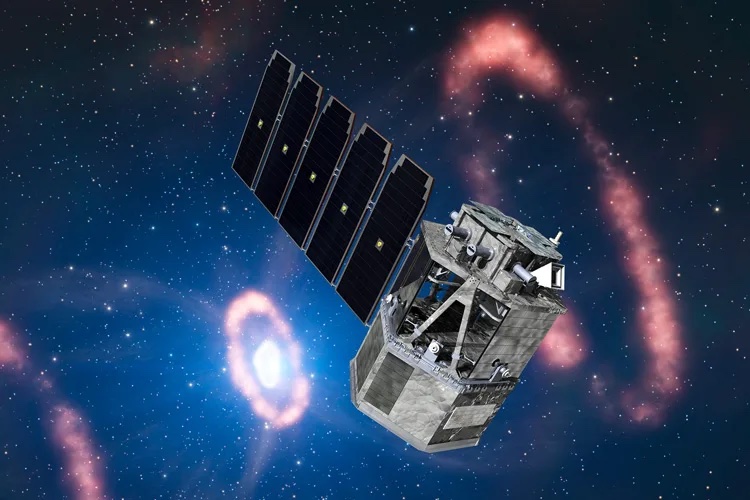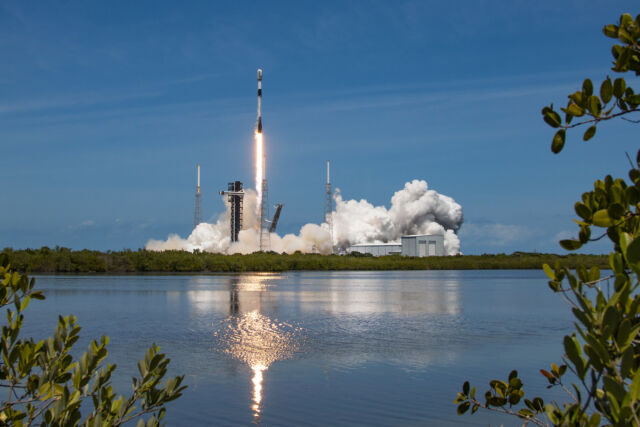
A small research satellite designed to study the violent processes behind the creation and destruction of chemical elements will launch on a SpaceX Falcon 9 rocket in 2027, NASA announced Tuesday.
The Compton Spectrometer and Imager (COSI) mission features a gamma-ray telescope that will scan the sky to study gamma-rays emitted by the explosions of massive stars and the end of their lives. These supernova explosions generate reactions that fuse new atomic nuclei, a process called nucleosynthesis, of heavier elements.
Using data from COSI, scientists will map where these elements are forming in the Milky Way galaxy. COSI’s observations will also yield new insights into the annihilation of positrons, the antimatter equivalent of electrons, which appear to be originating from the center of the galaxy. Another goal for COSI will be to rapidly report the location of short gamma-ray bursts, unimaginably violent explosions that flash and then fade in just a couple of seconds. These bursts are likely caused by merging neutron stars.
The COSI mission will be sensitive to so-called soft gamma rays, a relatively unexplored segment of the electromagnetic spectrum. The telescope is based on a design scientists have flown on research balloon flights.
NASA selected COSI in a competition for funding to become the next mission in the agency’s Explorers program in 2021. Earlier this year, NASA formally approved the mission to proceed into development for launch in August 2027, with an overall budget in the range of $267 million to $294 million, according to NASA budget documents.
From Florida to the equator
COSI is a relatively small spacecraft, built by Northrop Grumman and weighing less than a ton, but it will ride alone into orbit on top of a Falcon 9 rocket. That’s because COSI will operate in an unusual orbit about 340 miles (550 kilometers) over the equator, an orbit chosen to avoid interference from radiation over the South Atlantic Anomaly, the region where the inner Van Allen radiation belt comes closest to Earth’s surface.
SpaceX’s Falcon 9 will deliver COSI directly into its operational orbit after taking off from Cape Canaveral, Florida, then will fire its upper stage in a sideways maneuver to make a turn at the equator. This type of maneuver, called a plane change, takes a lot of energy, or delta-V, on par with the delta-V required to put a heavier satellite into a much higher orbit.

SpaceX
NASA awarded SpaceX a firm-fixed-price contract valued at $69 million to launch the COSI mission. This is about a 37 percent increase in the price NASA paid SpaceX in a 2019 contract for launch of the similarly sized IXPE X-ray telescope into a similar orbit as COSI. The higher price is at least partially explained by inflation.
The space agency didn’t have much of a decision to make in the COSI launch contract. The Falcon 9 is the only rocket certified by NASA that can launch a satellite with the mass of COSI into its equatorial orbit.
In the next couple of years, NASA hopes United Launch Alliance’s Vulcan rocket and Blue Origin’s New Glenn launcher will be in the mix to compete for launch contracts for missions like COSI. All of ULA’s remaining Atlas V rockets are already booked by other customers.
